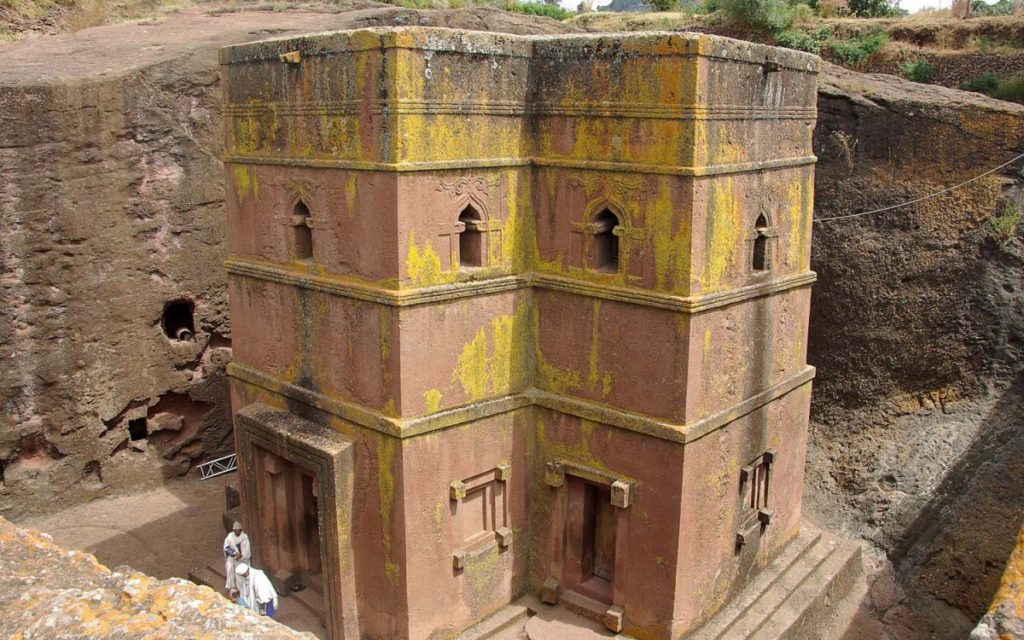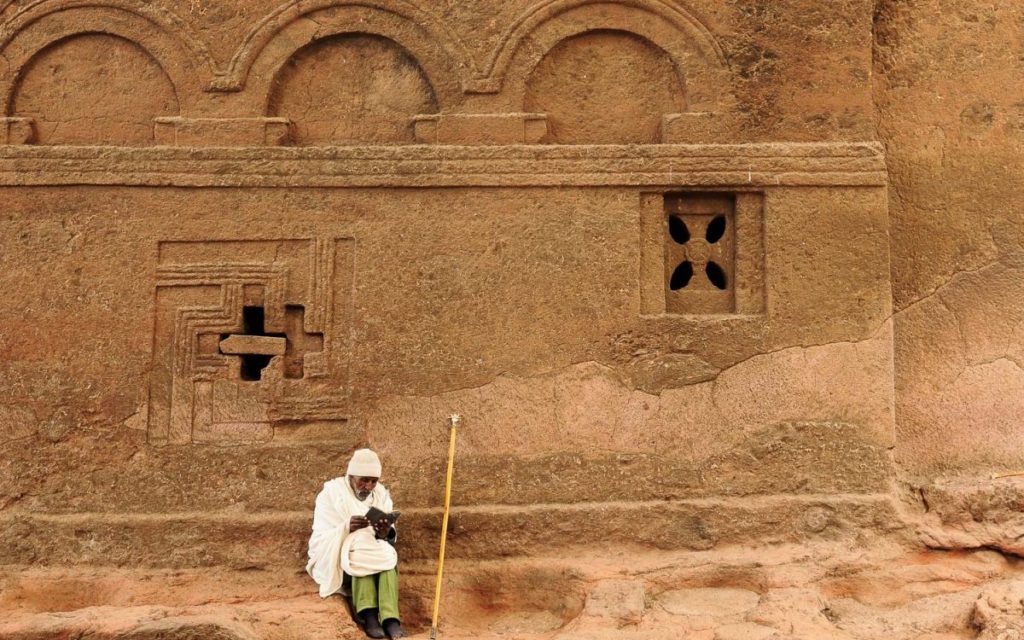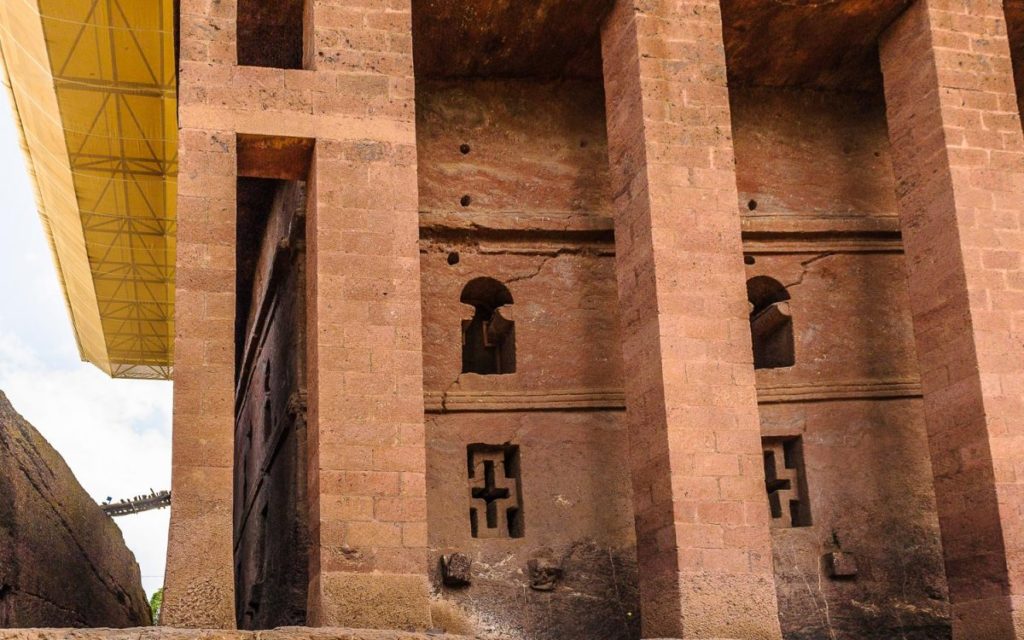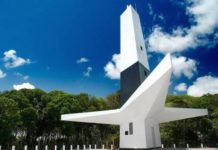The Lasta mountains conceal the monastic city of Lalibela, whose temples were cut out of volcanic rock, to emulate the Holy Lands on African soil.

The place is so overwhelming that Portuguese priest Francisco Álvarez, who visited it in 1521, dared not describe its majesty, for fear he would not be believed. In his tale, Prester John of the Indies, he confessed: “I will write no more of these marvels, since I wonder whether they will accuse me of falsehood.” This sacred territory of Ethiopian Orthodox Christianity was conceived by King Gebre Mesqel, known as Lalibela, as a symbolic representation of Jerusalem, in response to it having been taken over by Muslims. Set at an altitude of 2,630 m, and more than 10 m tall, the temples were chiselled into the rock of the mountains, around the year 1200.

The River Yordanos, excavated in the rock, like the rest of the monastic city, divides Lalibela into two church complexes. The northern part is home to the largest monolithic church on the planet, Biete Medhani Alem, or the house of the saviour of the world. It is a reproduction of the Church of Our Lady Mary of Zion, which was located in the religious capital of Ethiopia, Aksum, and destroyed in 1535, by Muslim invaders.Those approaching Lalibela see nothing until they are literally standing over the monuments. The churches seem to directly “sprout up” from the stone, to which they are attached at the base and on one or more sides, always below ground level. Further below, under the temples, is a dark labyrinth of passageways, tunnels and caves, which connect 10 of the 11 churches

Good to know:
The Lalibela Cross
Weighing in at 7 kg of solid gold, it is the most prized relic in Ethiopia, and is kept at Biete Medhani Alem. When it was stolen in 1997, the people “beat their chests and tore out their hair” for the pain of the loss. Years later, it appeared in the luggage of an art merchant.
















